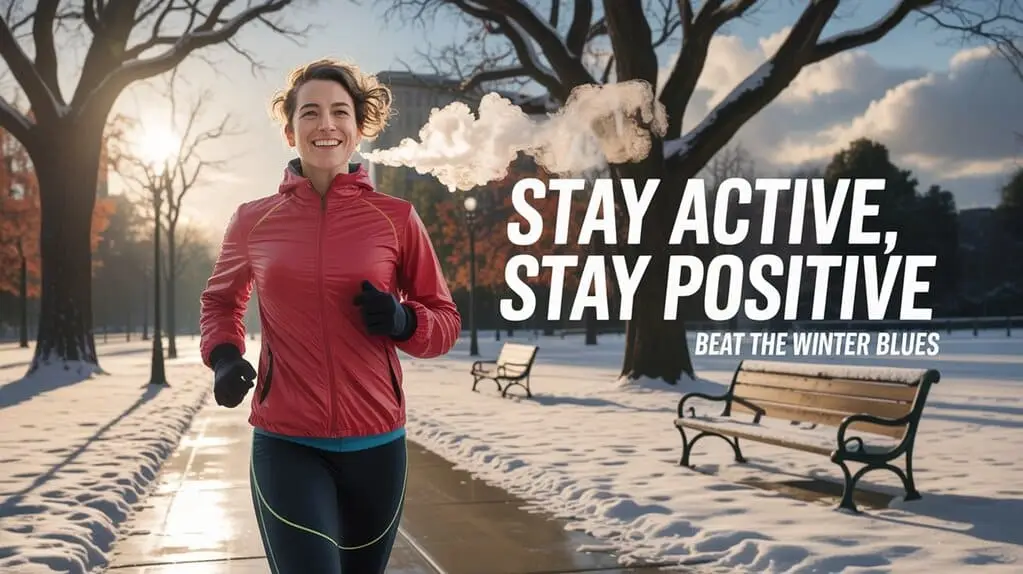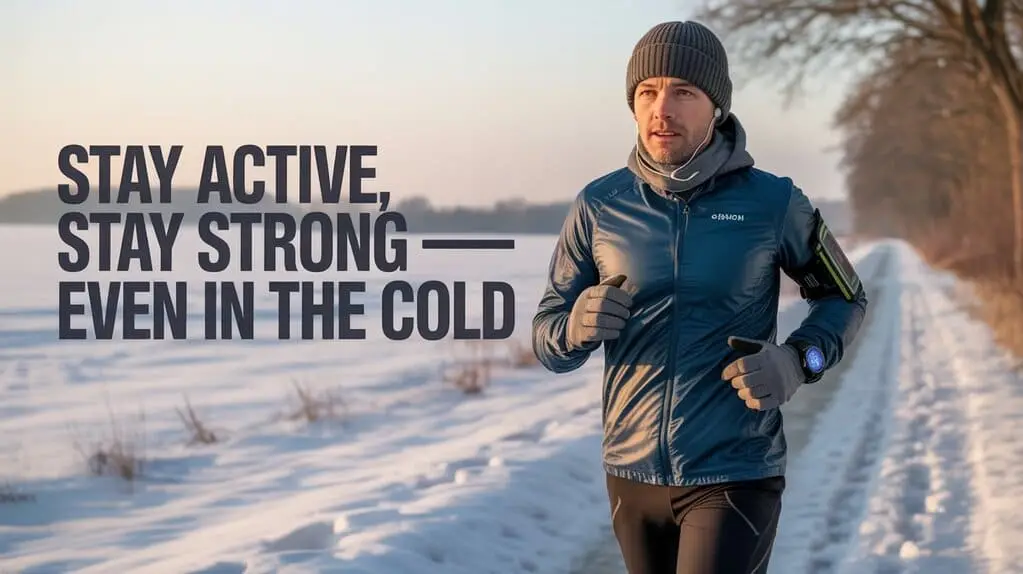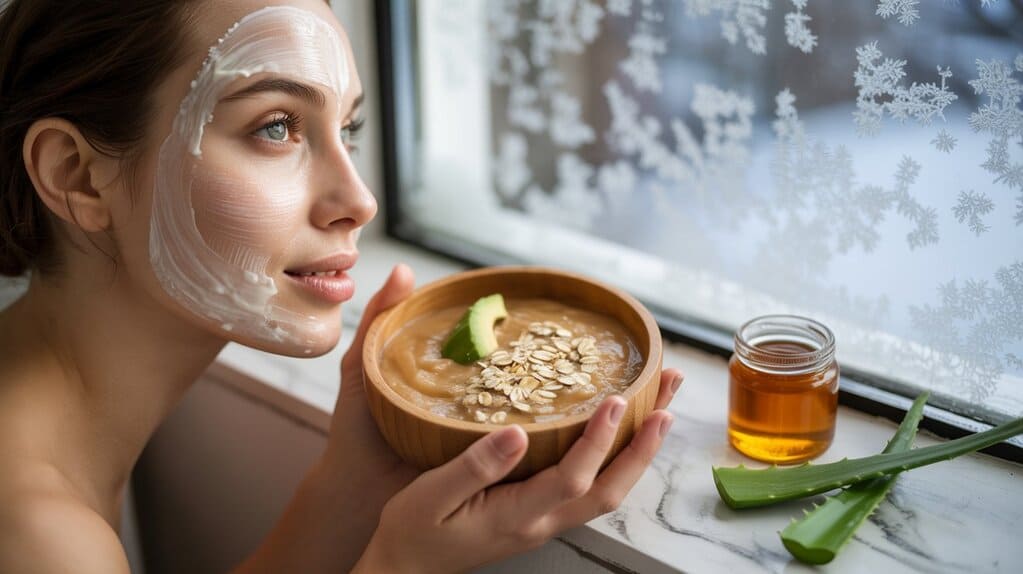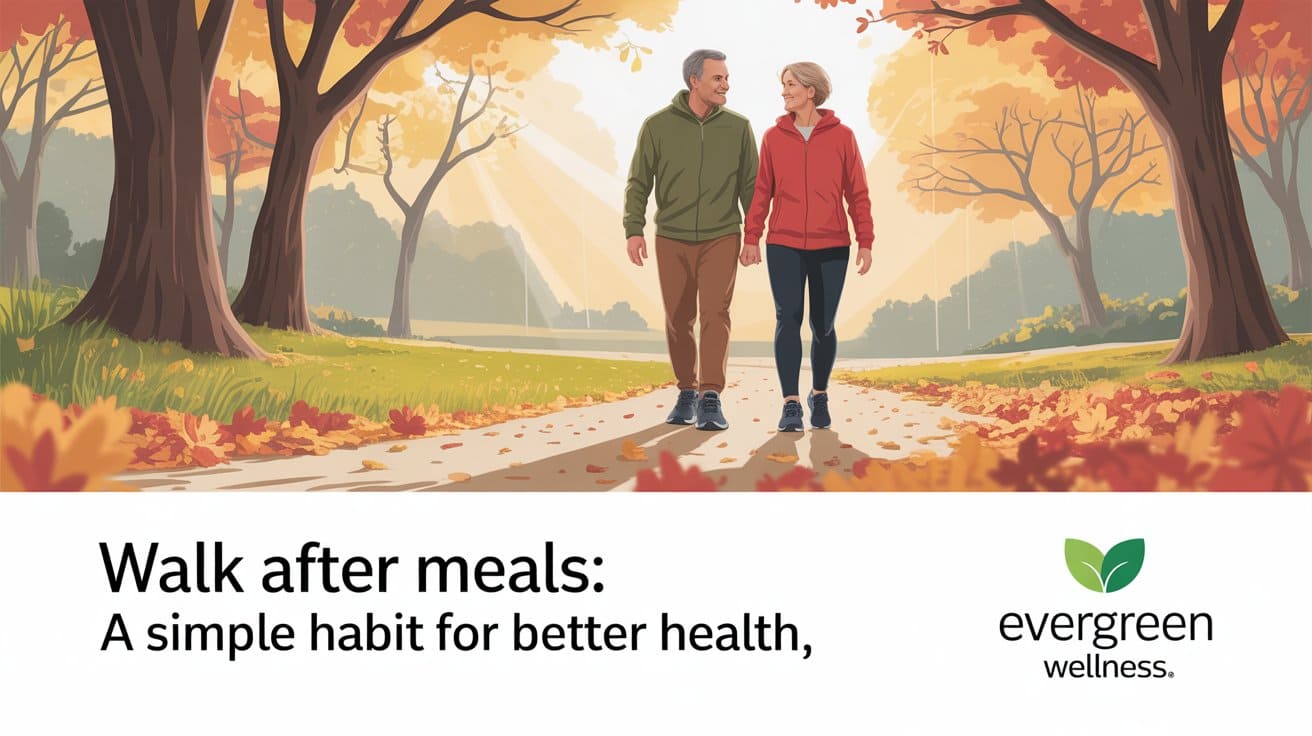
Introduction
As the long, bright days of late summer begin to shorten and early fall ushers in cooler mornings and crisper evenings, your body—and your routine—benefit from a seasonal tune-up. This transition is a sweet spot: warm enough for outdoor sessions, cool enough to push intensity, and perfect for re-centering habits before winter. In practical terms, that means prioritizing hybrid training (strength + cardio), dialing in protein and fiber-rich whole foods, optimizing hydration as heat lingers, and being mindful of vitamin D as daylight decreases. The guidance below blends global public-health recommendations with recent research—so you can maintain muscle, support metabolic health, and protect immunity while enjoying the best of the season. (Seasonal framing: WikipédiaEncyclopedia Britannica)
Key Points (at a glance)
- Adults should aim for 150–300 minutes of moderate aerobic activity (or 75–150 minutes vigorous) weekly plus muscle-strengthening at least twice weekly. PMC
- Steps matter: getting to ~7,000–10,000 steps/day (and/or hitting 8,000+ steps on multiple days/week) is consistently linked to lower mortality risk. The LancetPubMedJAMA Network
- For muscle and strength, target ~1.6 g protein/kg/day (upper threshold for most), and consider pre/post-exercise or evening protein for incremental gains. PubMed+1
- As days shorten, be mindful of vitamin D—levels tend to dip with reduced sun; food sources and (if needed) supplements can help under medical guidance. PMCScienceDirect
- In warm spells, reduce heat illness risk with structured hydration, acclimation, and cooling strategies. PubMedOlympics
- A 10–20 minute walk after meals helps blunt post-meal glucose spikes—a powerful, simple routine to carry into fall. PMCdiabetesresearchclinicalpractice.comMDPI
- A Mediterranean-style pattern (plants, legumes, whole grains, olive oil, nuts, fish) remains a well-supported base for heart and metabolic health. WikipédiaNew England Journal of Medicine

The Body
1) Train for Strength and Stamina—With Seasonal Smarts
Why now? Early fall’s cooler air supports sustained cardio while late-summer daylight energizes outdoor movement. Pairing resistance training with moderate-to-vigorous aerobic work is the evidence-based baseline for long-term health. Global guidance: 150–300 minutes/week of moderate aerobic activity (or 75–150 minutes vigorous), plus 2+ days of muscle-strengthening. (WHO) PMC
Step counts are a simple anchor during seasonal transitions. A 2025 meta-analysis suggests ~7,000 steps/day already confers sizable mortality benefits; JAMA cohort data show 8,000+ steps on several days each week also associates with lower mortality risk. If you prefer intensity over volume, brisker paces amplify benefits. The LancetPubMedJAMA Network
Heat-savvy training: Late summer can still be hot. To limit exertional heat illness, follow consensus strategies—acclimate gradually, schedule harder sessions in cooler hours, use pre-cooling (cool fluids, shade) and on-the-go hydration, and be alert to early warning signs (dizziness, confusion, cessation of sweating). PubMedOlympics
A practical 7-day microcycle (late summer → early fall)
| Day | Focus | Details | Why it works |
|---|---|---|---|
| Mon | Upper-body strength + easy steps | 45–60 min compound lifts; 6–8k steps | Maintains muscle, joints fresh for week |
| Tue | Zone 2 cardio (bike/run/row) | 35–45 min conversational pace | Builds aerobic base without excess fatigue |
| Wed | Lower-body strength + core | 45–60 min squats/hinges; anti-rotation core | Supports gait, posture, fall-season hiking |
| Thu | Tempo or intervals | 20–30 min structured speed; warm-up/cool-down | Lactate threshold, time-efficient fitness |
| Fri | Mobility + steps | 20–30 min mobility; 8k casual steps | Recovery, connective-tissue resilience |
| Sat | Long easy cardio outdoors | 45–75 min hike, ride, or jog | Seasonal vitamin D exposure; mental health |
| Sun | Active rest | Gentle yoga, walk after meals | Glycemic control & habit maintenance |
(General dose based on WHO; step outcomes supported by JAMA/Lancet analyses.) PMCThe LancetPubMed
Pro tip: If evenings are cooler where you live, shift intervals or tempo sessions there. If mornings are your only window, front-load strength and keep conditioning easy to moderate.
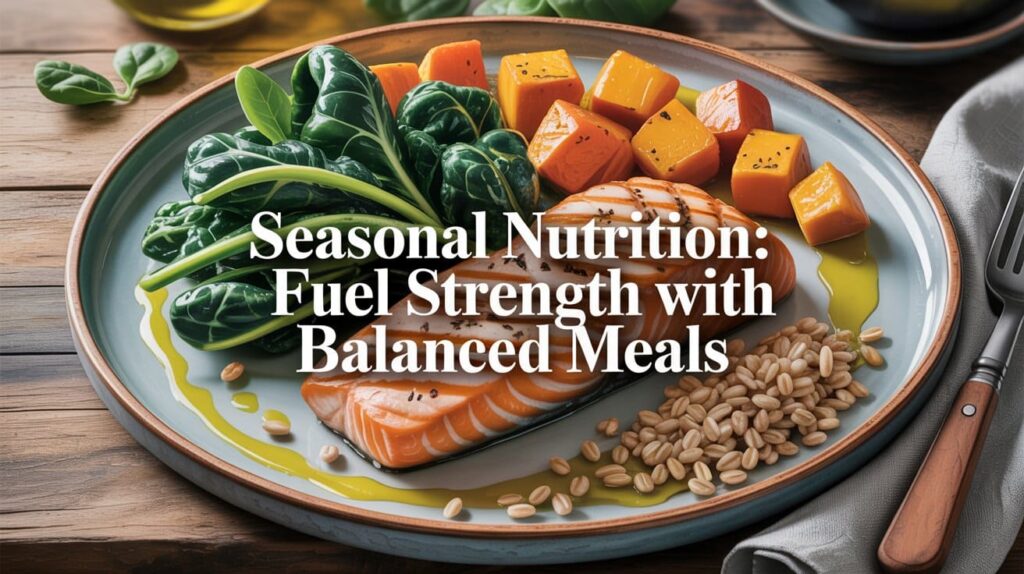
2) Precision Nutrition for the Shoulder Season
Protein: dose, quality, timing
To preserve or build muscle as routines shift back indoors, aim for ~1.6 g/kg/day protein (a pragmatic ceiling for most lifters), spread over 3–4 meals with 25–40 g high-quality protein each time. A landmark meta-analysis links protein supplementation to greater strength and hypertrophy, with diminishing returns above ~1.6 g/kg/day. A 2023 review highlights pre/post-exercise and night-time protein as productive timing targets. PubMed+1
Application: Late-summer smoothies (Greek yogurt + berries + oats), early-fall bowls (lentils + roasted squash + tahini), and post-workout milk or whey are practical, evidence-aligned options.
Carbohydrates & fiber
Keep whole-grain and produce-heavy carbs central for training energy and gut health—oats, barley, brown rice, beans, apples, figs, late-summer tomatoes and peppers, early-fall pumpkins and Brussels sprouts. This aligns naturally with a Mediterranean-style template—rich in plants, olive oil, nuts, and seafood—associated with improved cardiometabolic outcomes in large European trials. WikipédiaNew England Journal of Medicine
Fats that support recovery
Favor extra-virgin olive oil, nuts (walnuts, almonds), seeds (flax, chia), and oily fish (sardines, mackerel). These provide MUFA and omega-3s that support heart health and may help temper exercise-induced inflammation—all integral to a Mediterranean pattern. (Overview + heritage: Wikipedia; clinical endpoint data: PREDIMED re-analysis). WikipédiaNew England Journal of Medicine
3) Hydration, Heat, and Electrolytes
Even as fall approaches, late-day heat can linger. Expert consensus emphasizes proactive hydration, electrolyte (sodium) replacement for heavy sweaters, and individualized strategies (e.g., weigh-in/out to estimate sweat rate). Pair this with cooling, shade, and session timing to keep performance and safety high. PubMedOlympics
Quick guide:
- Arrive hydrated (pale urine, steady energy).
- For sessions ≥45–60 min in heat, include electrolytes (especially sodium).
- Rehydrate after workouts; consider ~150% of body mass lost over the next 2–4 hours (practical rule of thumb used in sports medicine). PubMed
4) Vitamin D & Daylight
As daylight shortens from September onward (Northern Hemisphere), vitamin D status can drift downward—prevalence of deficiency tends to peak in winter and be lowest in late summer/early autumn, but individual risk varies by latitude, skin pigmentation, outdoor time, and diet. Consider: safe sun exposure, D-rich foods (oily fish, fortified dairy/plant milks, eggs), and lab-guided supplementation if needed. (Global review and seasonal data—including Asia and Europe). PMCScienceDirect

5) المشي بعد الوجبات: عادة صغيرة ذات تأثير كبير
A 10–20 minute walk soon after eating (rather than waiting hours) blunts post-meal glucose spikes, supporting metabolic health and energy stability. Systematic reviews and recent meta-analyses (Europe and global cohorts) show consistently greater benefits when walking begins immediately or within ~30–45 minutes post-meal. Make it a daily anchor as weather cools. PMCdiabetesresearchclinicalpractice.comMDPI
Tables & “Figures”
Table 1 — The “Smart Plate” for Late Summer → Early Fall
| Plate half | Foods | Why now |
|---|---|---|
| ½ Vegetables & fruit | Tomatoes, peppers, leafy greens, apples, figs, pumpkin, Brussels sprouts | Fiber, polyphenols, micronutrients for immunity & recovery |
| ¼ Protein | Fish, poultry, eggs; Greek yogurt; tofu/tempeh; beans & lentils | Supports muscle repair; aligns with 1.6 g/kg/day target |
| ¼ Smart carbs | Oats, barley, brown rice, whole-grain pasta, potatoes | Glycogen for training; steady energy |
| Fats (drizzle/handful) | Olive oil, nuts, seeds | Heart-healthy MUFA & omega-3s |
| Bonus | Herbs/spices (garlic, oregano), fermented foods | Flavor, antioxidants; potential gut benefits |
(Structure consistent with Mediterranean-style eating patterns.) Wikipédia
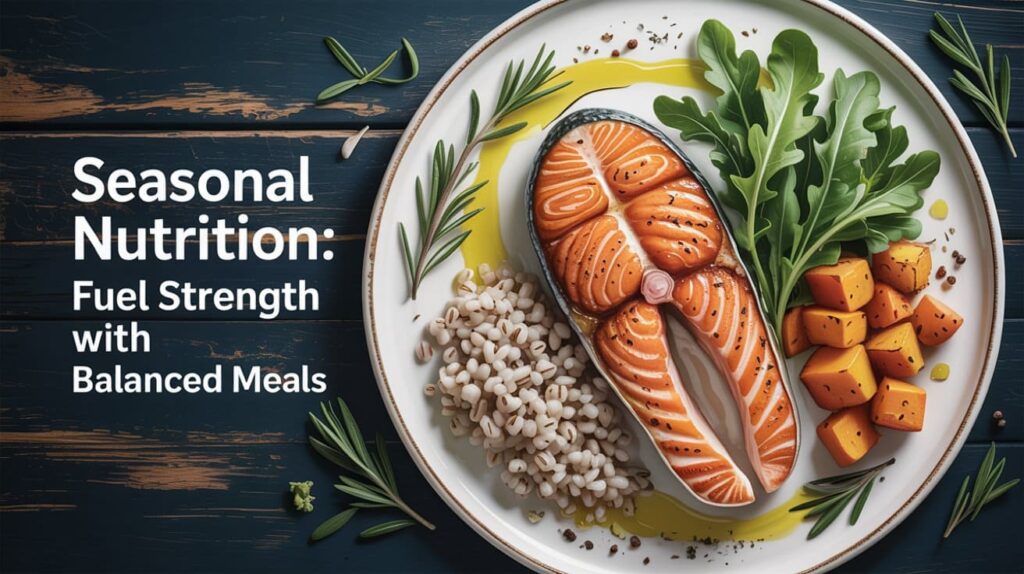
Table 2 — Protein Timing Cheat-Sheet
| Moment | Practical options | Evidence cue |
|---|---|---|
| Breakfast | Eggs + whole-grain toast; yogurt + oats + nuts | Front-loads daily protein |
| Pre-workout (1–2 h) | Greek yogurt + fruit; small whey shake | Pre/post protein aids hypertrophy/strength |
| Post-workout (0–2 h) | 25–40 g complete protein (whey, milk, soy, eggs) | Muscle protein synthesis window |
| Evening | Cottage cheese, casein shake, skyr | Night protein may support overnight recovery |
(Protein dose ~1.6 g/kg/day; timing signals from recent reviews.) PubMed+1
“Figure” — A Simple Late-Summer / Early-Fall Day Plan
07:00 Wake + sunlight (15 min) → water
07:30 Protein-forward breakfast
12:30 Balanced lunch → 10–15 min walk
17:30 Strength or cardio (cooler hours)
19:00 Mediterranean-style dinner → 10–20 min walk
22:30 Lights down; consistent bedtime
(Chrononutrition and routine timing support circadian alignment and metabolic health.) PMC
Putting It Together: A Seasonal 1-Week Menu (Mediterranean-leaning)
- Mon: Yogurt-oat parfait; lentil-veggie bowl with olive oil; salmFitness & Nutrition Tips for Late Summer and Early Fall: Stay Strong and Healthyon + barley + roasted peppers.
- Tue: Eggs + spinach; whole-grain wrap (chicken, greens); bean-tomato stew + sourdough.
- Wed: Smoothie (milk/soy, berries, oats); sardine salad; tofu stir-fry + brown rice.
- Thu: Skyr + nuts; chickpea-avocado salad; chicken thighs + potatoes + broccoli.
- Fri: Cottage cheese + fruit; mushroom-barley soup; grilled mackerel + greens.
- Sat: Omelet + veg; hummus + whole-grain pita + salad; lentil-pumpkin curry.
- Sun: Pancakes (oat/egg) + berries; tuna-white bean salad; pasta pomodoro + side salad.
(Style consistent with authoritative overviews and European trials.) WikipédiaNew England Journal of Medicine
Safety, Progression, and Personalization
- Start where you are. If you’re under the WHO minimums, build gradually: +10–15 minutes/week of cardio or +1–2 sets per lift. PMC
- Warm-weather caution. Prioritize shade, electrolytes, and cooling; reschedule hard sessions if heat index is high. PubMedOlympics
- Vitamin D awareness. Discuss testing with your clinician if you have limited sun exposure, deeper skin tone, or live at higher latitude; adjust diet/supplementation accordingly. PMCScienceDirect
- Medical conditions. If you have chronic disease, injury, or you’re new to exercise, consult a healthcare professional for tailored programming.
Conclusion
Late summer into early fall is a powerful moment to recommit to fitness, refine nutrition, and build habits that endure into winter. Anchor your week with two or more strength sessions, accumulate ~150–300 minutes of aerobic activity (or vigorous equivalents), and make post-meal walking your new non-negotiable. At the table, let a Mediterranean-leaning pattern do the heavy lifting: plants first, olive oil, legumes, whole grains, nuts, fish, and sensible portions of dairy and eggs—backed by robust European trial data and decades of observation. Keep hydration intelligent while warm days last, and watch vitamin D as daylight shrinks. With these practical, research-grounded habits, you’ll preserve muscle, steady blood sugar, support heart health, and step into autumn feeling stronger than ever.
References (selected)
- Global guidelines: World Health Organization. WHO 2020 Guidelines on Physical Activity and Sedentary Behaviour; and 2024 fact sheet update. PMCOrganisation mondiale de la santé
- Steps & mortality (Americas/Global): JAMA 2023 (8,000-step days vs. mortality); JAMA 2020 (steps & intensity); Lancet Public Health 2025 meta-analysis on daily steps. PubMedJAMA NetworkThe Lancet
- Protein & strength (Asia/Global): Morton et al., 2018 meta-analysis (upper threshold ~1.6 g/kg/day); Zhou et al., 2023 review on timing/types (pre/post & night). PubMed+1
- Vitamin D (Asia/Europe): Cui et al., 2023 global/seasonal prevalence; Xi et al., 2024 seasonal pattern analysis. PMCScienceDirect
- Heat illness & hydration (Americas/Europe): ACSM Expert Consensus on Exertional Heat Illness (2023); IOC consensus on training/competing in heat. PubMedOlympics
- Post-meal walking (Europe/Global): Engeroff et al., 2023 systematic review/meta-analysis; Slebe et al., 2024 meta-analysis; Bellini et al., 2024 review (10–15-min bouts). PMCdiabetesresearchclinicalpractice.comMDPI
- Dietary pattern background (Europe): Wikipedia overview of the Mediterranean diet; PREDIMED (re-analysis in NEJM 2018) demonstrating CVD risk reduction with Mediterranean diet + EVOO or nuts. WikipédiaNew England Journal of Medicine
(Seasonal context and definitions sourced from Wikipedia and Britannica for clarity.) WikipédiaEncyclopedia Britannica
